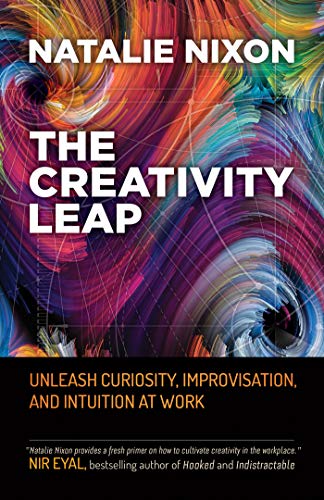
Are you the sort of person who believes that creativity is an indulgent luxury? Perhaps you think that creativity is reserved for rare free time? Or maybe you think of “creative types” only as artists, designers, musicians, and dancers. Well, if you’ve been under this impression, I’ve got news for you.
You’re wrong.
To be human is to be hard-wired to be creative. And now, during a global pandemic that has exacerbated the amount of uncertainty and complexity we experience on a daily basis, creativity is more essential than ever. The good news is that creativity loves constraints on time, finances and people talent. It is the engine for innovation. Specifically, creativity is our ability to toggle between wonder (audacity, awe, and blue-sky generative thinking) and rigor (discipline, time on task, and deep focus) to solve problems. When you consider creativity in this light, you realize that the most exceptional engineers, accountants, educators, physicians, plumbers- and you -are uber creative.
Ten years ago, if your organization was not a tech company in some form, then you were in trouble. Today, if you’re not a creative company – no matter your sector – then watch out.
As technology replaces redundant tasks, there will actually be more room for people to exercise their creative capacity. In 2015 the World Economic Forum (WEF) projected that creativity would rank #10 among the top job skills for 2020. One year later, in 2016, the WEF bumped up creativity to the number three job skill. And soft skills have only continued to become hard core ones. A 2019 LinkedIn research study asserted that creativity is the #1 soft skill for which companies are hiring. A 2016 global study on creativity by the Adobe software firm found that when companies invest in creativity, employee productivity increases by 78%, 80% have satisfied customers, 78% produce a better customer experience, 83% foster innovation, and 73% are financially successful.
Creativity has a business ROI.
It turns out that we cannot afford not to be creative. We won’t see our way out of these complex times with a linear Gantt chart. Creative problem solving requires us to initially value quantity over quality and embrace the remix by juxtaposing odd combinations. The creative process also requires us to do the tedious work of converging and getting tactical. For example, consider this odd juxtaposition: a vending machine and cars. Sound weird? Not if you’re Carvana!
In recent months, the following three sectors have embraced creativity for practical survival.
Fitness
I’m a member of a small and local dance studio call DanceFit, which is located in Philadelphia and owned by Bria Moss-Wilkerson. By April 2020, it pivoted to streaming live classes and also offered on-demand classes. This small business, owned by a young African-American woman, applied experimental thinking to meet the clients where we were. They continue to adapt weekly and use the questions and feedback from clients to “wonder” out loud on social media and deliver new offerings.
Food & Bev
Ghost kitchens or “cloud kitchens” are a phenomenon that would not have seen the 52% year over year growth spurt were it not for COVID-19. These are virtual food brands and concepts created only for delivery. They originally started as shared kitchens at off-site locations. Ghost kitchens allow for low-risk experimentation because they are not connected to brick & mortar restaurants. Examples include Eric Greenspan’s Bubu’s, ASAP Poke, and Maude & Mabel’s Fine Creamery. Their reliance on 3rd party apps is sprouting a new ecosystem of services and experiences that continues to evolve. For example, there could be dynamic ramifications for the local food movement.
Healthcare
Sometimes creativity manifests in new experiences that are a result of changes in the way we work. Dr. Seiji Hayashi is Chief Transformation Officer & Medical Director at Mary’s Center in Washington, DC. He shared this perspective on the impact of increasing telemedicine because of COVID-19: “We thought that virtual care would hinder communication and “warm handoffs” of patients. But that has not turned out to be the case. In fact, the camaraderie among staff has improved because everyone is accessible through technology. And patients like that they are waiting in their place of choice and not in a clinic waiting room.”
Not surprisingly, all of these initiatives require immense amounts of wonder (to reframe what’s possible) and an incredible amount of rigor (to remain persistent and resilient). Convinced now? Great! Now get started on exercising your creativity competency.
______________________________________________________________________________________________________________________







